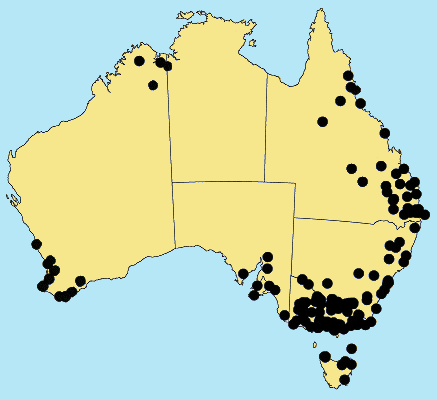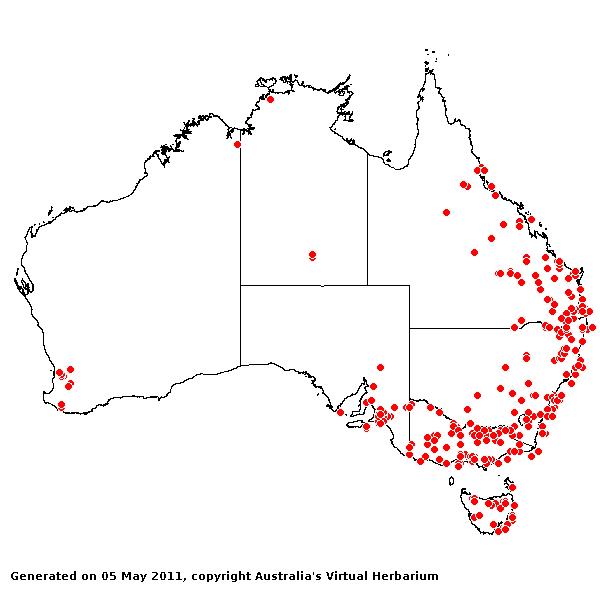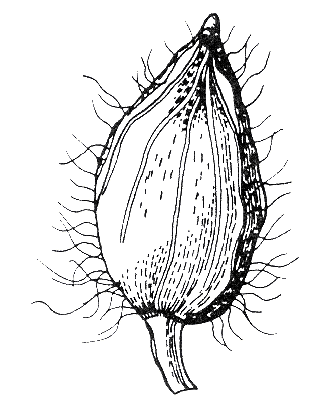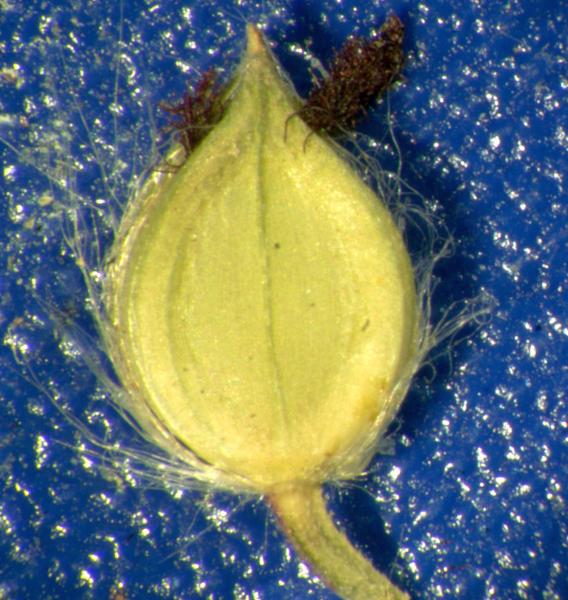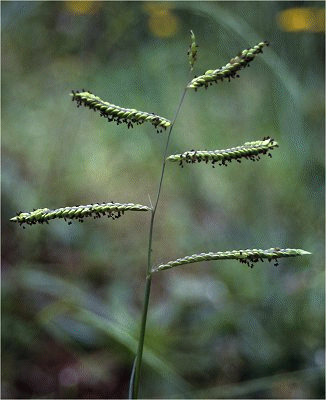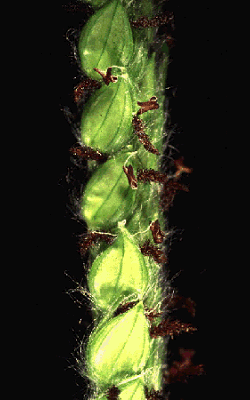Paspalum dilatatum* Poir. Lam.
Encycl. 5: 35 (1804).
Classification. (GPWG 2001) : Subfamily
Panicoideae. Paniceae.
Type of Basionym or
Protologue Information: Argentina: Buenos Aires, P. Commerson s.n.
(HT: P-LAM).
Key references (books
and floras): [1952] C.A.Gardner, Flora of Western Australia 1 Gramineae
(242), [2002] D.Sharp & B.K.Simon, AusGrass, Grasses of Australia,
[2002] J.Wheeler, N.Marchant & M.Lewington, Flora of the South West (425),
[2006] J.Jessop, G.R.M.Dashorst, F.M.James, Grasses of South Australia,
[2008] S.W.L.Jacobs, R.D.B.Walley & D.J.B.Wheeler, Grasses of New South
Wales (327).
Illustrations:
[1952] C.A.Gardner, Flora of Western Australia 1 Gramineae (243,
Pl. 71), [2006] J.Jessop, G.R.M.Dashorst, F.M.James, Grasses of South
Australia (469, Fig. 401), [1984]
N.T.Burbidge. rev. S.W.L.Jacobs, Australian Grasses (203), [2008] S.W.L.Jacobs, R.D.B.Whalley
& D.J.B.Wheeler, Grasses of New South Wales, 4th edn (327).
Habit.
Perennial. Rhizomes present. Stolons absent. Culms erect or decumbent, 25–180
cm tall, 2–6 -noded. Mid-culm nodes glabrous. Lateral branches simple.
Leaf-sheaths glabrous on surface or hairy. Leaf-sheath auricles absent. Ligule
an eciliate membrane, 2–8 mm long. Leaf-blades 6–45 cm long, 3–12 mm wide.
Leaf-blade surface smooth, indumented.
Inflorescence.
Inflorescence compound, a panicle of racemes. Racemes (2–)3–5(–11), appressed
or spreading, 4–12.5 cm long, 1–1.4 mm wide, bearing 70–140 fertile spikelets
on each. Central inflorescence axis 2–20 cm long.
Spikelets.
Spikelets sessile and pedicelled. Fertile spikelets 2-flowered, the lower
floret barren (rarely male), the upper fertile, comprising 1 basal sterile
florets, comprising 1 fertile floret(s), without rachilla extension, ovate,
dorsally compressed, 2.7–3.9 mm long.
Glumes. Glumes
thinner than fertile lemma. Upper glume ovate, 2.7–3.9 mm long, membranous,
without keels, 3–9 -nerved. Upper glume surface indumented. Florets.
Basal sterile florets 1, barren, without significant palea. Lemma of lower
sterile floret 100 % of length of spikelet, membranous, 3–9 -nerved.
Fertile lemma 2–3.2 mm
long, without keel.
Continental
Distribution: Europe, Africa, Temperate Asia, Tropical Asia, Australasia,
Pacific, North America, South America, and Antarctica.
Australian
Distribution: Western Australia, Northern Territory, South Australia,
Queensland, New South Wales, Victoria, Tasmania, Norfolk I, Lord Howe.
Western Australia:
Drummond. South Australia: Flinders Ranges, Eyre Peninsula, Murray,
Yorke Peninsula, Southern Lofty, Kangaroo Island, South-eastern. Queensland:
Burke, Burnett, Cook, Darling Downs, Leichhardt, Moreton, North Kennedy, Port
Curtis, Wide Bay, South Kennedy. New South Wales: North Coast, Central
Coast, South Coast, Northern Tablelands, Central Tablelands, Southern
Tablelands, North-Western Slopes, Central-Western Slopes, South-Western Slopes,
South-Western Plains. Victoria: East Gippsland, Eastern Highlands,
Gippsland Highlands, Gippsland Plain, Grampians, Lowan Mallee, Midlands, Murray
Mallee, Otway Plain, Otway Range, Wilsons Promontory, Riverina, Volcanic Plain,
Wannon, Wimmera. Tasmania: Furneaux Group, North West, North East, East
Coast.
Notes.
Similar to P. urvillei and though the species are very distinctive it is
difficult to find a character that distinguishes all specimens. Typically, P.
dilatatum has larger spikelets, fewer primary branches, a shorter main axis
and more nerves on the upper glume and lower lemmas.
Introduced. In
temperate heaths, tropical and subtropical rain forests, temperate rain
forests, tropical and subtropical wet sclerophyll forests, temperate wet
sclerophyll forests, dry sclerophyll forests, Brigalow forests, tropical and
subtropical sub-humid woodlands, semi-arid shrub woodlands, acacia shrublands,
tropical sub-humid grasslands, and temperate sub-humid grasslands. A weedy
species prefering moist ditches, disturbed areas, and is a common invader of
gardens. Flowers sporadically throughout the year.
